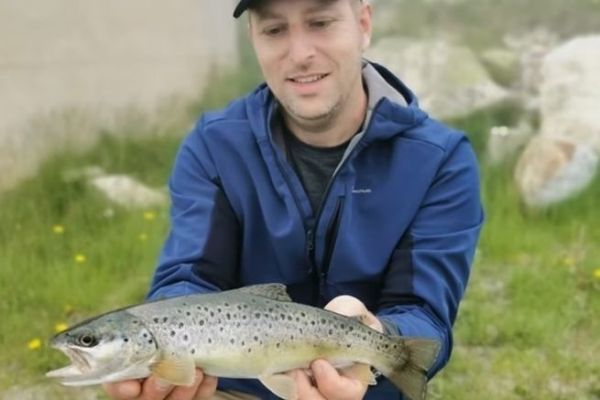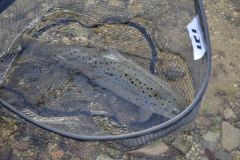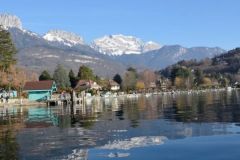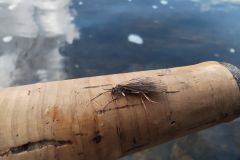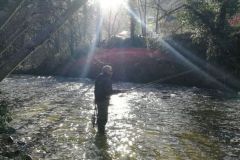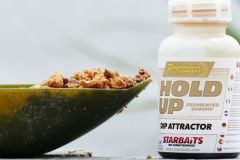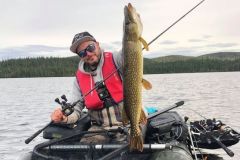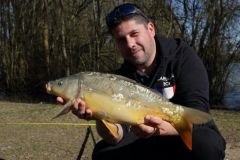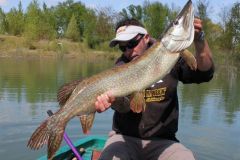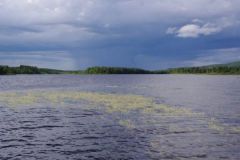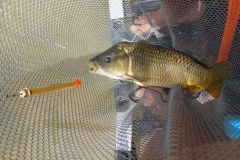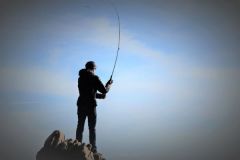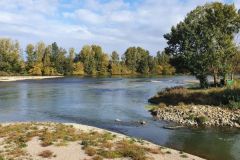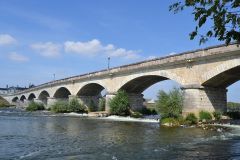The riverbanks
Banks are, of course, essential areas for trout fishing. They shelter natural hiding places formed by tree roots, bushes and other vegetation, and are often hollowed out by the current. A veritable larder for trout, these areas are also rich in aquatic insects and invertebrates, as well as small fish that take refuge there from the strong current.
It is important to remain discreet when prospecting, as trout can be found very close to shore. The angler's stride should be even lighter than usual so as not to frighten the posted fish. For best presentation of the bait or lure, it is advisable to place it upstream of the fishing area, so that the current carries it gently towards the trout. A good pair of polarized glasses will also be ideal for this type of position.
The pits
Pools are deep areas with a calmer current where trout mainly take refuge to rest. These areas are often inhabited by large fish, particularly at the start of the season. The fish hide on the bottom and can be induced to hunt if the angler goes after them with heavier rigs, such as sinking swimbaits or natural baits that he will work on the bottom. The entrance and exit of the pool are strategic areas to prospect, as opportunistic trout often position themselves there to take advantage of the food carried by the current. Water temperature is more stable in these deeper areas, which often attracts trout in warmer weather.
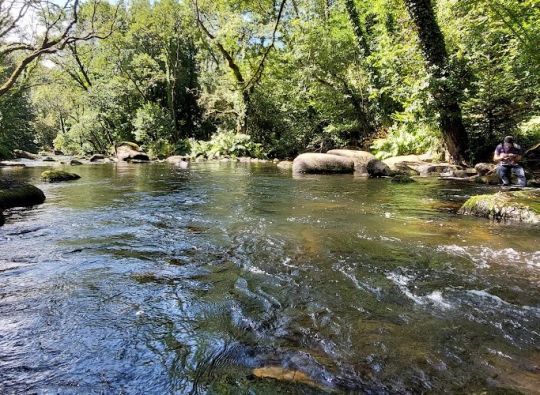
Boulders and obstacles
Rocks, tree trunks and other obstacles are ideal hiding places. These elements disrupt the current, creating slow zones where fish can hide and wait for food to pass by. In summer, trout often move to these areas to take advantage of the increased oxygenation generated by the water flowing around the obstacles. Trout are often found under rocks or in nearby eddies. It is advisable to start prospecting around these obstacles before concentrating on deeper areas.
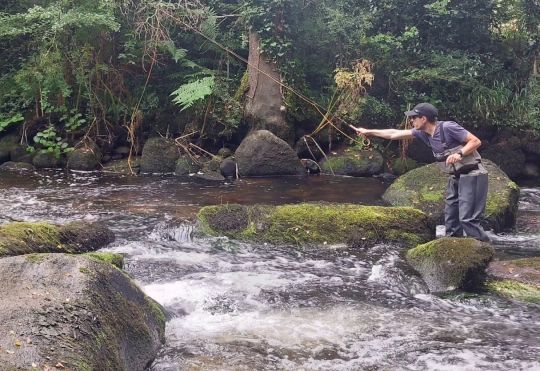
Waterfalls
Waterfalls offer ideal conditions for trout, with well-oxygenated water and large numbers of insects chased away by the powerful currents. Behind the curtain of water formed by the waterfall, cavities can shelter fish. The highly oxygenated water is particularly attractive to trout in summer, when water temperatures are higher. When fishing near a waterfall, it is advisable to prospect the peripheral currents and the calm part of the basin. These areas are often frequented by trout at the start of the season, but also after a flood, when they take refuge in less disturbed areas.
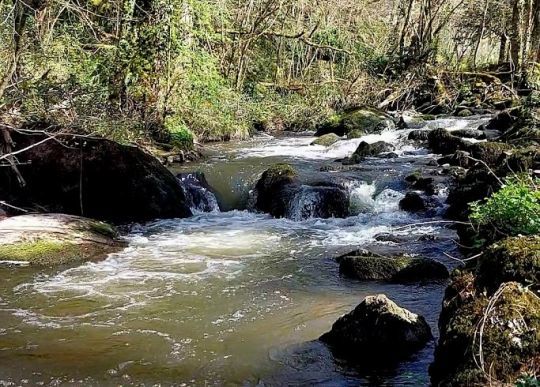
Underwater vegetation
Areas of submerged vegetation, such as grass beds, are perfect refuges for trout. They find small prey and can observe their environment while protected. The current is often slower, allowing the fish to feed without too much effort. These areas are particularly attractive in spring and summer, when aquatic insects are abundant and salmonids can hide from predators.
When prospecting, it is essential to use suitable rigs to avoid snagging in the vegetation. A lure fitted with a Texan hook makes it easier to navigate these tricky areas.
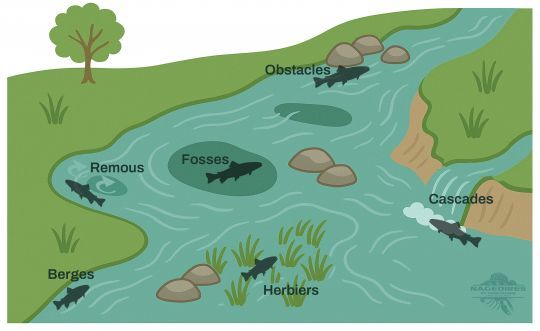
Currents and eddies
Rapid currents and eddies are prime spots for summer fishing, as they are well oxygenated and rich in food. In late winter or spring, these spots can also be home to trout, especially when they encounter a submerged obstacle. Trout often position themselves behind the obstacle, against the current, just at the edge of the strongest current, to limit the energy expended by swimming while having visibility of the larder, which can be difficult to spot.
It's important to pay attention to the direction of the current and the eddy-forming current returns, as trout can position themselves in these areas, which sometimes seem inaccessible. In summer, when temperatures rise, trout will often seek out these eddies to recharge their batteries, so it's essential to take into account the oxygenation of the water, as these areas provide oxygen and attract fish.
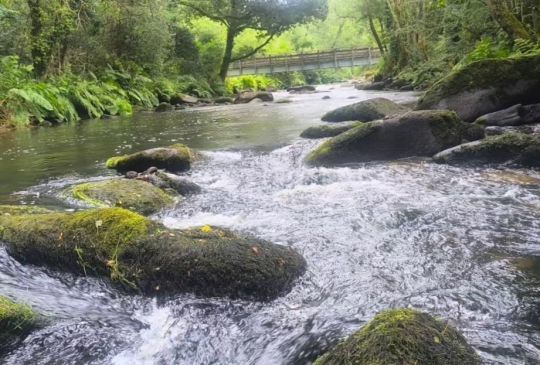
Flood or turbid water
Pitted or slightly swollen waters can be ideal conditions for finding more cautious trout. With visibility reduced, fish feel safer and can be more active. Trout often take advantage of the abundance of food carried by the current to feed. However, a heavier rig will be needed to hold the current and trigger bites.
In murky water, observing the water surface can provide clues. Small waves indicate a shallow bottom, while calm water can indicate great depth.
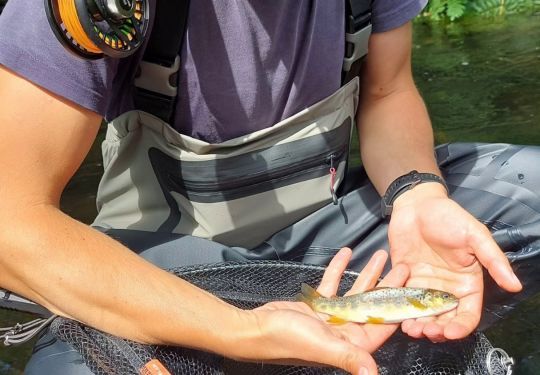
Spotting trout therefore requires the angler to observe his environment carefully and use common sense to match what he observes with the biological knowledge of the trout he is stalking. Every element, whether banks, pools, rocks or currents, offers clues as to the best places to prospect. The key lies in discretion and the ability to adapt fishing techniques to river conditions, such as temperature, water oxygenation or time of year.
